DURANGO-SILVERTON (Day 17 - part 2)
Tank Creek water tank is the first of two stops. The train's water supply is almost depleted at this point and it could require up to 4,500 gallons of water to refill. The original wooden tank was removed in 1966.

Above the tank (not visible from here) is a dam to ensure a constant supply of water throughout the year.

A lovely view of the Animas River

The conductor uses this time to inspect the wheels of the train.



A man asks if he could have a piece of coal that was lying on the ground for his kids, as souvenir. The conductor obliges.
We get back underway and the beauty of the spectacular scenery continues.

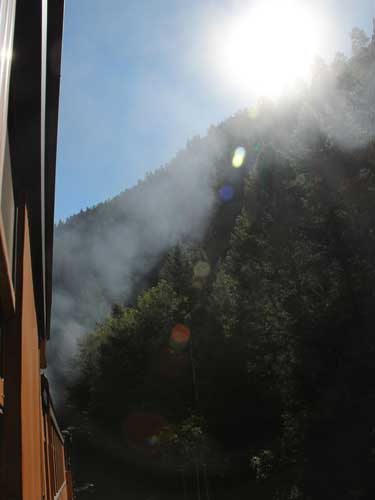
Smoke mingles with sunlight

Aspen trees

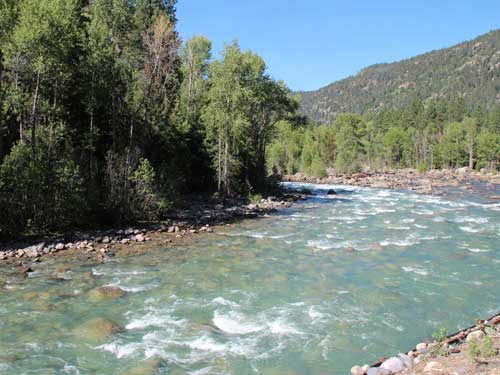
At one spot during the trip, I watched as a bright blue cell phone bounced down the rocky shore right into the water. Clearly someone in a previous car hadn't been holding onto it tight enough!

A portion of the old Animas Canyon Toll Road from 1877 is still visible across the river.



Pigeon Peak (left) with an elevation of 13,961 feet and Turret Peak (right) at 13,841 feet are in the Needle Mountain Range.

Maybe a speed limit sign? At top speed, the train can go 18 miles per hour.

Flood waters have cause this bridge to see better days.
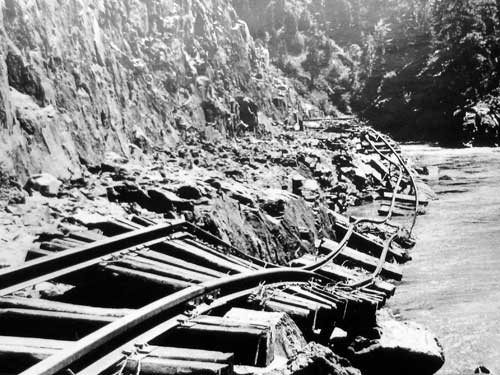
Floods are not foreign to the Animas River. Here's an old photo of a September 1970 flood which washed out part of our tracks.
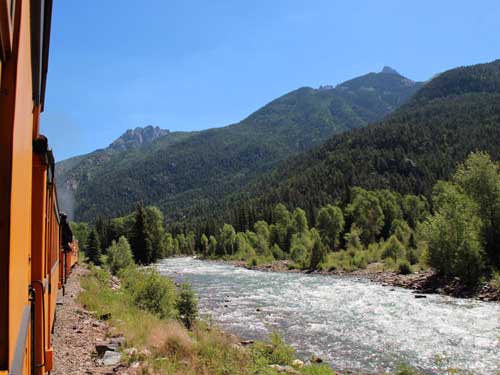

The stop at Needleton is a popular spot for hikers to get off the train.


The Needleton siding is where trains can pass each other.

Retanking water for the second time at Needleton, mile 484.5

The tank in an old photo from 1951.



Fabulous color!
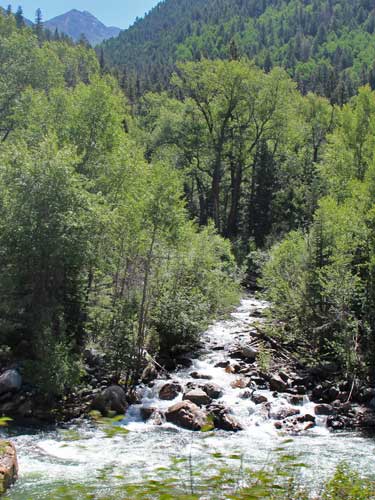
Side stream

Elk Creek...

... was another spot where hikers could get on or off the train.

In 1884, this area was also a wye, to enable trains to turn back around in case the higher elevations were blocked by snow. Supplies would continue on up to Silverton via pack animals. The wye stopped being used in the 1950's.



Avalanches are common in this area due to all the steep slopes.

An old phone or telegraph pole

More abandoned history


Almost at Silverton
We passed the old depot and headed right down 12th Street to the center of town. It had taken us 3.5 hours to complete the 45 mile journey, from an elevation of 6,512 to 9,305 feet. We had just over 2 hours to explore the town.

Our engine, #481, is part of the 480 series or K-36 locomotives. These engines, built by the Baldwin Locomotive Works in 1925, were the last ten narrow gauge locomotives constructed for the D&RGW. Used for hauling freight, the "36" stands for 36,200 pound-force of tractive effort. Fully loaded with coal and water, the engine weighs 286,600 pounds. Four still operate on this line today.


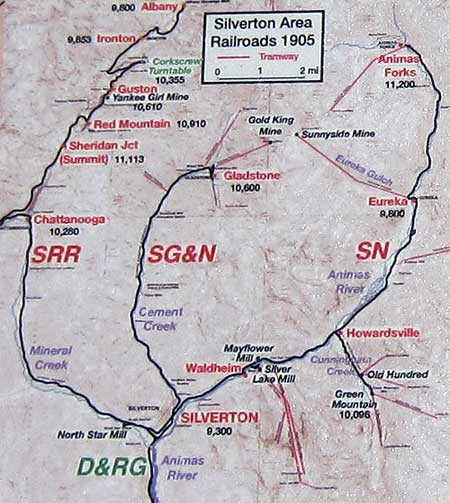
Denver & Rio Grand (D&RG), Silverton Railroad (SRR), Silverton Northern (SN) and Silverton Gladstone & Northerly (SG&N)
Railroads were vital to the development of mines... hauling ore out and bringing coal and supplies in. Without them, lower grade ore mining wouldn't have been profitable. During its heyday, Silverton was served by four railroads. Each one served a different canyon, bringing down valuable ores from the San Juan mountains. The mines were at 12,000 feet or higher and manned by miners who lived there year-round in giant boardinghouses of over 200 men. Mining operations finally ceased in 1991.
Our train was backed out of the way to make room for the next incoming train, which happened to be the 473.

The 470 series or K-28 locomotives were built by the Schenectady Locomotive Works in 1923. They have 28,000 pound-force of tractive effort and weigh 254,500 pounds fully loaded. Due to their smaller size, they are often used for shorter trains. Only three of the original ten remain. The others were requisitioned by the US Army in 1942 to be used in Alaska during World War II. They were later dismantled for scrap in 1946. Engine 473 used to frequently run on the Chili Line that operated between Antonito (CO) and Santa Fe (NM) until the line was abandoned in 1941.



Draining the hot water

It takes five people to run a train: conductor, head brakeman, rear brakeman, engineer and fireman. There are also attendants in the concession and private cars.

When granular loads are placed in cars, sometimes the doors were nailed shut to prevent leakage of the grain or minerals. This is a warning not to do it on this class of car.
return • continue

